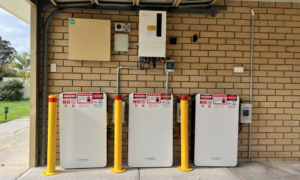It’s a term that’s being increasingly bandied around – clean coal.
In just the last week, Minister for Climate Change and Water Penny Wong has used the term several times in interviews, as has Opposition environment spokesman Greg Hunt, Federal Opposition Leader Malcolm Turnbull and a myriad of other politicians and commentators. It’s become quite a buzz-phrase, but one that contradicts itself.
Even the Australian Coal Association resists using the term and it won’t be found often on their New Generation Coal, aka NewGenCoal, site. Why? Because according to an Australian Coal Association (ACA) representative, it “confuses consumers”.
If even the ACA, an industry body representing the interests of the black coal producers in Australia, is hesitant to use the term; why are politicians applying it so freely? It’s probably very important the Australian public understands what “clean coal” actually is and what the country may be letting itself in for given that it’s such a hot topic at present.
Coal, put simply, cannot ever be clean. Low-emissions coal is a more accurate term. However, those low emissions come at a huge environmental cost. While carbon emissions may be able to be captured and store (buried), it’s still a very controversial process and the long term ramifications are not clear. What is known is that it takes a great deal of additional energy extract and store this waste; up to 20% more.
This means up to 20% more coal is needed to “create” low emissions coal. That coal will not magically appear, it needs to be mined. Mining coal is not only generally environmentally destructive process, it is a carbon emissions intensive exercise in itself.
Last week, Federal Opposition Leader Malcolm Turnbull launched a new policy to address climate change that focuses on carbon capture and storage (CCS), which he says is a superior approach to Labor’s Emissions Trading Scheme (ETS). Even under Labor’s programs, the coal industry will benefit greatly with as much funding going to it as will be put towards clean energy alternatives such as solar energy and wind power.
Of Malcolm Turnbull’s new policy, Australian Greens Deputy Leader and Climate Change Spokesperson Senator Christine Milne stated “..he will continue to protect and subsidise coal, keep renewable energy at the margins and barely begin to make serious emissions cuts.”
An important solution missing from the carbon emissions reduction debate in recent times is the subject of feed in tariffs, a scheme whereby the uptake of solar power systems by home owners and businesses is subsidised on an ongoing basis after initial rebates through the payment of a premium rate for each kilowatt hour of clean energy produced. Such schemes have been proven incredibly successful in places such as Germany – a country with far less solar resources than Australia.
A petition was recently launched by Australian renewable energy company Energy Matters at Feed In Tariff.com.au, with the goal of bringing this viable carbon emissions reduction strategy back into the spotlight. Judging by the response in just the first few days since the petition was launched, even given the Australia Day long weekend; it’s an approach many Australians want given more serious consideration to, rather than coal capturing so much of the government and opposition’s attention and potentially – hundreds of millions of additional taxpayers dollars.












































